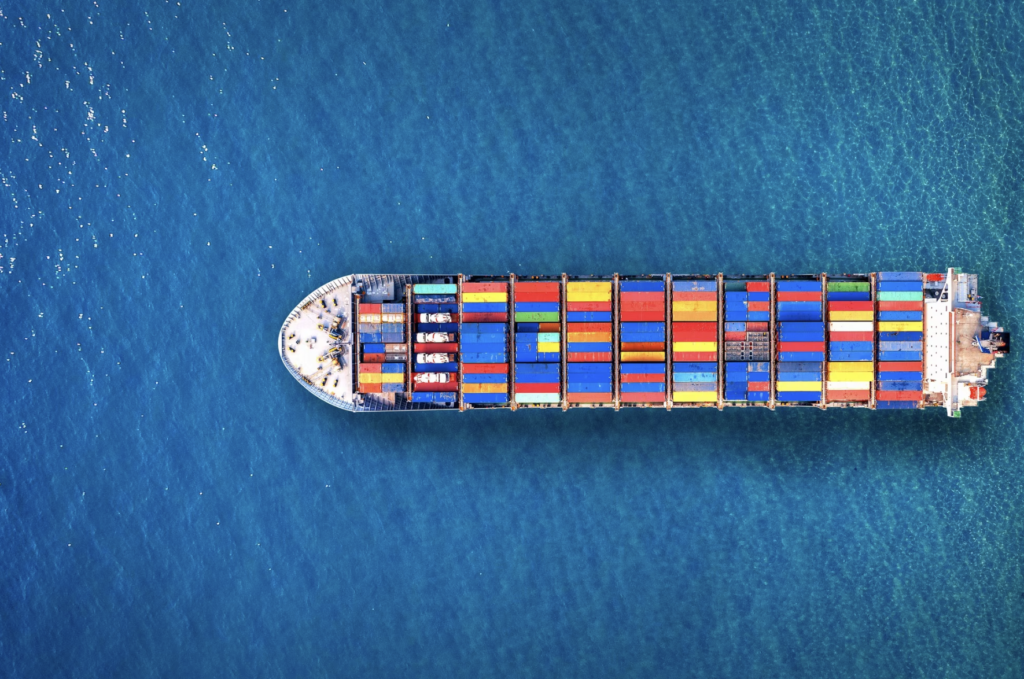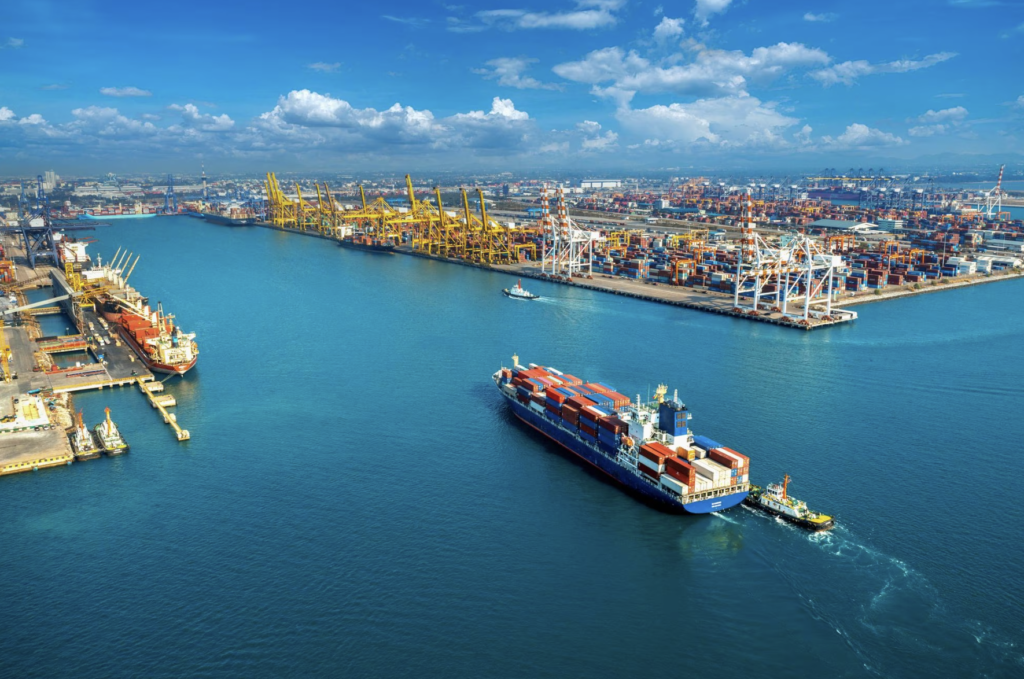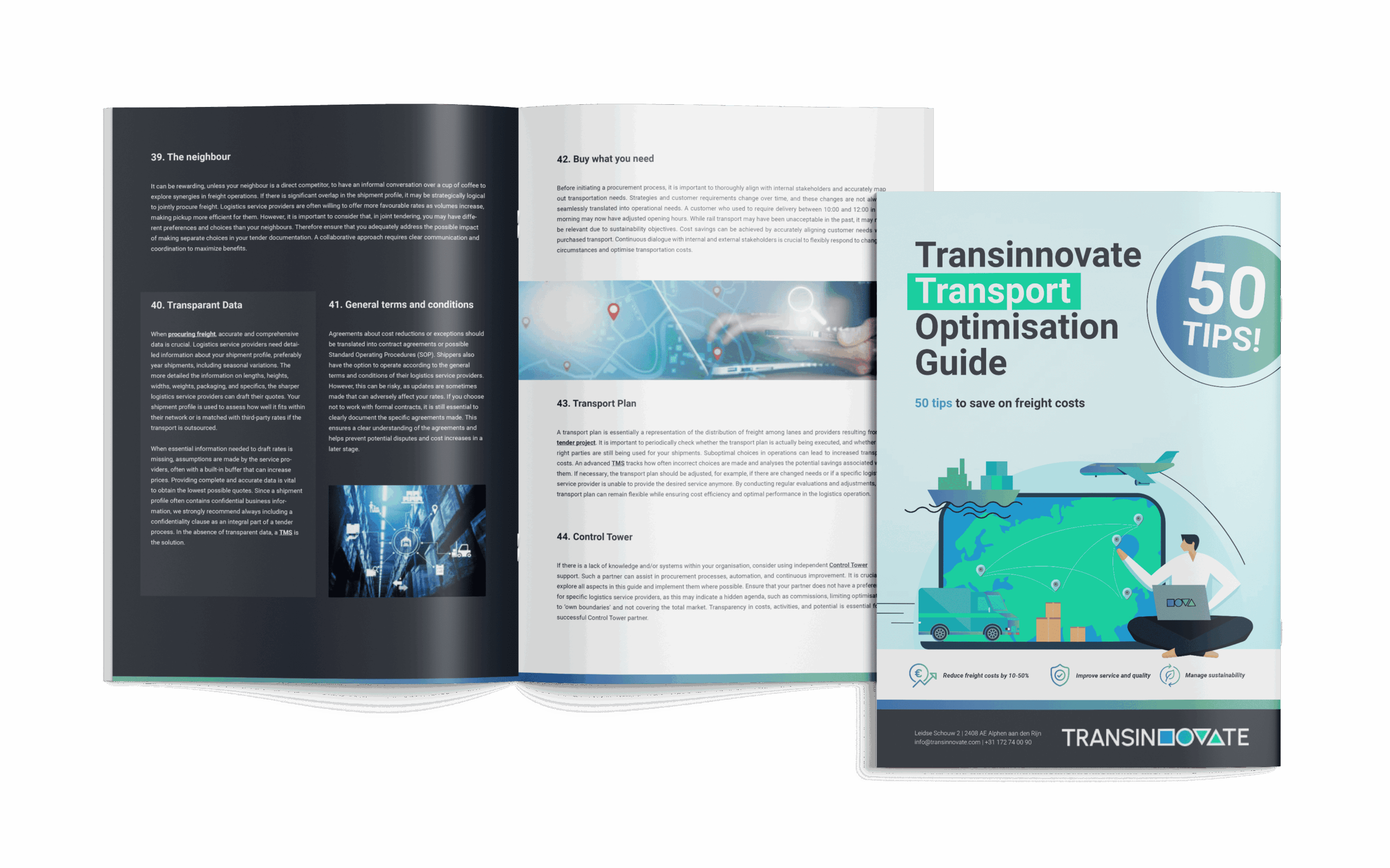Sea freight is a commonly used modality for the transportation of goods and food, where transport time does not need to be very fast and low costs are important. There is a distinction between “short sea”, over short distances within the same continent, and intercontinental “deep sea” / “ocean freight”.
By far, most sea freight is shipped by container (full containers FCL and partial loads LCL) on large container ships operated by major shipping companies. There are roughly a dozen shipping companies that dominate the world market (the most important being MSC – Mediterranean Shipping Company, APM-Maersk, CMA-CGM, COSCO, Hapag-Lloyd, ONE, Evergreen, Hyundai, Yang Ming).


Effective sea freight procurement is mainly determined by volume. In general, the more volume you have to ship, the better the price. This is capitalized on by freight forwarders, agents, and Non Vessel Operating Common Carriers (NVOCC). They do not own their own ships, but provide transportation by using ships from shipping companies. By bundling volume, they can often purchase at competitive prices. Another advantage of such logistics service providers is that they take care of the paperwork and regulations related to sea freight, making it less of a hassle for the shipper.
Depending on what a shipper has to transport, how much, and where, it is therefore a question of whether it is better to negotiate directly with shipping companies or to use intermediaries. And then the question arises: which ones are best suited for you?
Sea freight prices fluctuate a lot throughout the year due to seasonal supply and demand, surcharges, fluctuations in fuel prices, and fluctuations in currency (sea freight is often in dollars, while local port costs and pre- & post-transport are in local currency). It is usually not advantageous to request sea freight rates with a long validity period because parties hedge against fluctuations with price buffers. When there is a lot of supply, the price goes up and shippers run the risk of their cargo being “rolled over” and not being shipped until a later departure.
Over several years, there is often also a wave-like movement of supply and demand (new, larger ships) that causes longer-term price fluctuations. For most shippers, a combined approach of procurement and management is recommended for sea freight, with a limited number of shipping companies or agents who complement each other well but also keep each other competitive in rates. This way, shippers pay a fair market price. A TMS can often provide cost and time savings.
Looking to gain more knowledge in optimizing or managing transportation? In our transport guide, we provide you with:

We will respond within one business day
We distinguish ourselves with market knowledge and experience combined with our software tools
Our approach is concrete and pragmatic

We distinguish ourselves with knowledge and experience in combination with our software tools. Our approach is above all concrete and pragmatic. We would be happy to discuss your challenges with you and explain without obligation how we can support you with our data-driven analyzes and/or software applications.